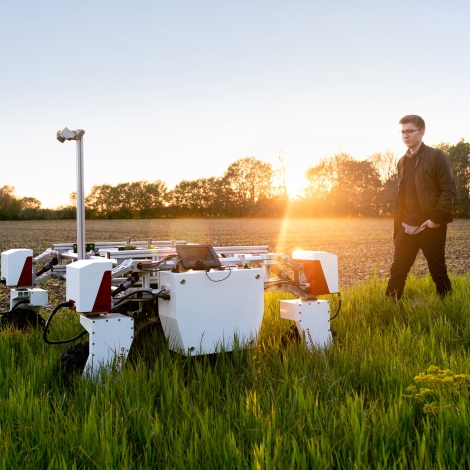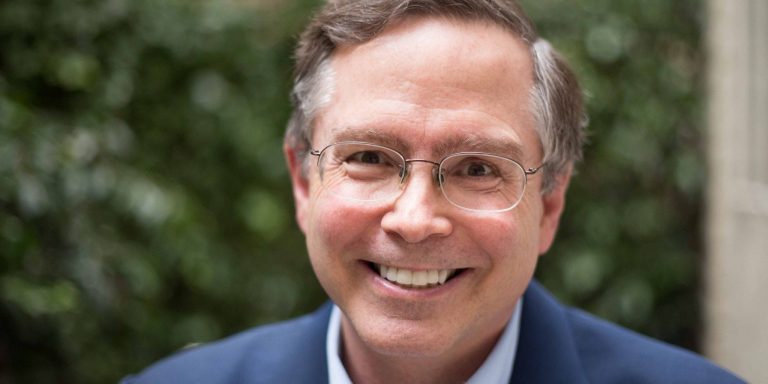Engineers can change the world, but what must change first is engineering itself.
Nearly everyone I encounter accepts that sustainability is an all-hands-on-deck imperative. But not everyone appreciates the extent to which it is fundamentally an engineering challenge.
While fostering a broad-based sustainability culture is absolutely the right thing to do, the truth is that saving the planet requires much more than riding your bike to work and recycling your pizza box. Yes, let’s all do those things. But let’s also understand that, compared to industrial scale polluters and resource consumers, the cumulative impact of individual action is relatively small. Achieving true sustainability requires an examination of our values, a shift in the way we think, and changes to how we act. The attitude of “I’m just doing what the spec says” doesn’t cut it anymore.
Engineers must accept personal responsibility for their work, understanding the deeper footprint, and entire lifecycle of our solutions. In other words, before engineers can change the world, what must change first is engineering itself.
Changing the way engineers are educated, employed, and evaluated is critical to developing the multidisciplinary, environmentally focused, socially conscious technical workforce the world needs to achieve true sustainability. Last year, in my capacity as co-chair of ASME’s Engineering Global Development Committee, I had the privilege of participating in the EGD Stakeholder Summit, one outcome of which was a whitepaper titled, “Engineering Workforce Advancing Sustainable Development.” Among other things, the whitepaper identified six cultural shifts required to achieve what it calls “engineering sustainable development.”
This space doesn’t permit a full exploration of those shifts; for that, you’ll need to refer to the whitepaper. But the key takeaways are these: First, engineers must take an interdisciplinary and multi-stakeholder approach, with the understanding that every engineered solution is part of a dynamic and interconnected system, having potentially wide social and environmental impacts.
The report also urges the profession to prioritize diversity and inclusion, for the simple reason that “a homogenous field is a limited field.” Better solutions inevitably result from more varied perspectives at the table.
Also required is a perception shift that challenges the notion that engineering is neutral. It’s not. “Values shape technology,” the report states, suggesting that design is a series of choices, and choices are informed by bias, conscious or not: Yet another reason why a more inclusive engineering process will produce more responsive—and responsible—outcomes.
The final insight I’ll mention is the most important: the need to “broaden engineering goals to include environmental and social outcomes.” An engineered solution that solves one problem while exacerbating another is not sustainable. The old metrics of technical performance, efficiency, and profitability are necessary but not sufficient. To these we must add the broader impacts a solution will have on the environment, on communities, and on individuals. If an engineered system or product advantages one group of people at the expense of another, then it fails the sustainability test.
Fortunately, this is not news to the engineering students I teach and the early-career professionals I meet in my work with ASME’s EGD programs.
What’s more, many of my former colleagues in senior engineering management roles are also championing these values.
There is a growing awareness across the engineering community that mechanical engineers must adopt a sustainability mindset, must in fact become sustainability engineers. This is already happening. Our task now is to accelerate this transformation.
ASME members can take pride in our Engineering Global Development initiatives, funded in part by the ASME Foundation. These include the one-million-member Engineering for Change (E4C) digital platform; our E4C Research Fellowships; and the ISHOW and IDEA Lab accelerators, which help social entrepreneurs bring sustainable innovations to market.
ASME’s Board of Governors recently adopted a statement on climate action that firmly and officially establishes the Society as a change-agent in the drive toward sustainable engineering. The statement implicitly acknowledges that mechanical engineers bear a disproportionate share of the responsibility for achieving sustainability. It’s a charge a growing number of us are both happy and well suited to fulfill.
Editor’s note: Engineering for Change is a non-profit LLC under the umbrella of the American Society of Mechanical Engineers (ASME). This article was originally published in Mechanical Engineering Magazine and has been reprinted with permission.
About the Author
Bob Hauck co-chaired ASME’s Engineering Global Development Committee. He is the retired chief mechanical engineer at GE Healthcare, and currently serves as an adjunct lecturer at Massachusetts Institute of Technology (MIT). To learn more about the ASME Foundation’s sustainability initiatives, visit asmefoundation.org.


I am a mechanical/aerospace engineer who switched career tracks to green buildings and renewable energy over 20 years ago, compelled by the existential threat of climate change and ecocide.
From that perspective I want to suggest that any engineer who cares about sustainability seek out training in ecology and in systems thinking.
These topics are not widely taught in the US, and are only rarely taught to engineers. But ecological literacy is essential in order to understand what is necessary to build a technological future that doesn’t undermine the basis of its own prosperity.
For engineers, one of the best ways to access these topics is through permaculture. Though originally developed for drylands agriculture, permaculture is at root a philosophy and a set of tools for designing regenerative systems – and these tools can be applied to nearly any context.
This piece says nothing substantive about what it takes to mitigate risks associated with the unsustainability of our political-economic system and way of life. It’s just thinly veiled “diversity-equity-inclusion” pablum. And the photo chosen to head the article borders on criminal irresponsibility and wrong-headedness. The idea that we’re destined for some Jetsons future where robots/AI do all of our farming and manual work is dangerously misleading. Calling a high tech farming robot “sustainable” is a sick joke. Tell that to the children forced to work in the coltan mines in the Congo. Tell that to villagers who’ve had their livelihoods destroyed, their land confiscated, and the ecosystems poisoned to mine lithium for batteries. Tell that to the people living in toxic waste dumps where electronics are mass manufactured, and where junked electronics are disassembled for “recycling” in toxic hellscape e-waste dumps in Ghana, China, and South Asia.
The engineering profession is completely lost, worshipping the sac-religion of infinite technological progress. Pray for us, brothers and sisters!
Thank you for always highlighting the need for professionals and organizations to take significant effort in the practice of intergenerational ethics. It’s evident that technology has done us so much good, but at the same time there is need for conservation, careful consideration of social and environmental impact of whatever we are bringing to the table, during the idea creation to product development etc.
I’m a mechanical engineer that moved to the field of green buildings last year because I want to contribute to a sustainable future. This article inspires me to strive toward sustainability, and I find it fascinating.